How To Get Rid Of The Different Types Of Scars On Your Legs
Learn what those scars mean to opt for the right treatment options.
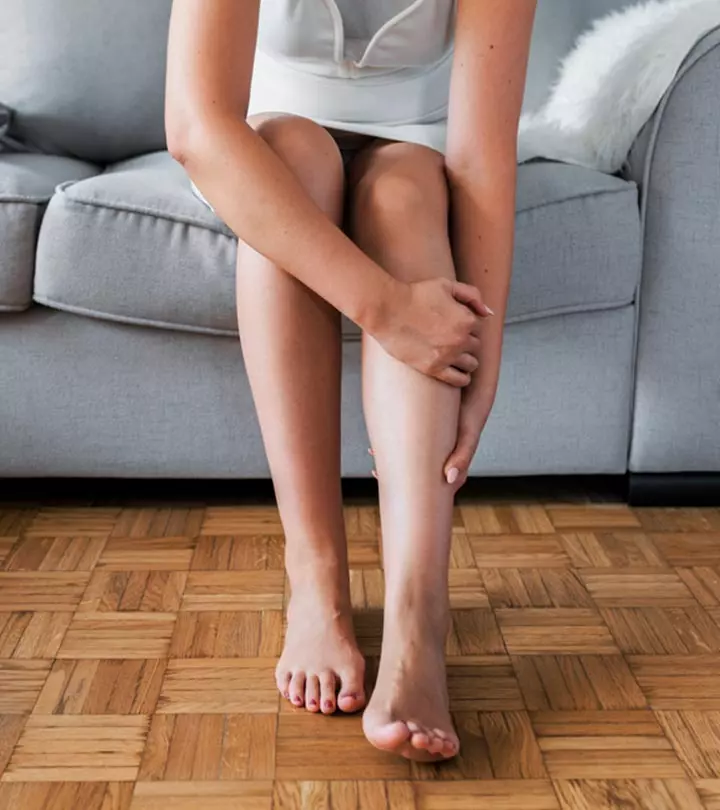
Image: Shutterstock
Scarring on the skin is a common concern in dermatology as wounds may often leave behind scars. While most of them fade, deep scars may become a cosmetic concern, especially if you got them on your legs. If you are wondering how to get rid of scars on legs, we have the solution. While you cannot erase the scars on your legs, you can make them barely noticeable without the need to hide them with clothing.
Several treatments and remedies can help you minimize the scar’s appearance, including those related to cosmetic surgery. However, that depends on the type of scar you have. This article discusses different types of scars, natural and OTC treatment options, other ways to manage them, and additional tips to prevent scarring on the legs. Scroll down to learn more.
According to a study conducted on 11,100 individuals, 48.5% of the participants reported having at least one scar. For 50.8% of the participants, their most recent scar occurred due to a disease or accidental reasons. Additionally, 22% of them reported that their most recent scar was less than a year old.
In This Article
Causes And Types Of Scars On The Legs
Burns, injury, weight loss, cuts, and bruises – multiple factors can leave behind scars on your legs. Some of the common types of scars include:
1. Contracture
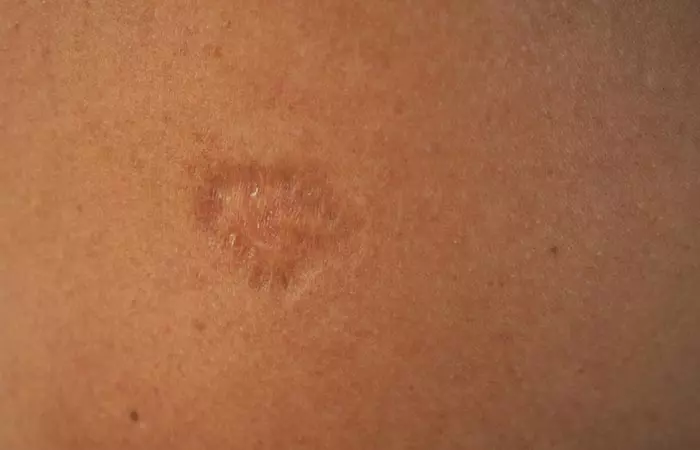
Contractures occur when the skin contracts upon healing. This type of scar pulls the skin edges, causing skin tightening. It is the characteristic scar caused by burns and can restrict movement, especially when it affects the nerves, tendons, joints, and muscles.
2. Atrophic Scars
Atrophic or depressed scars result from skin inflammation caused by conditions like chickenpox, injury, boils, and abscesses. There are many types of Atrophic acne scars, such as boxcar scars, ice pick scars, and rolling scars. They appear as small, rounded pits or indentations. They can become prominent with age.
3. Flat Scars (Cicatrix)
Such scars may initially appear pinkish and slightly raised. They eventually level out as they heal. Flat scars often become pale or darker than the surrounding skin and are caused by injuries.
4. Keloids
Keloids are scar tissues that appear shiny and hairless and rise above skin surfaces. They grow larger than the actual wound and are caused due to a variety of reasons, ranging from skin conditions like acne to surgical procedures. Depending on their location, keloids may affect movement.
5. Hypertrophic Scars
Hypertrophic scars rise above the skin surface, and they do not spread out like keloids
(1). They are caused by mild cutaneous injuries like insect bites, vaccination, and skin piercing. Although they get smaller with time, they do not flatten entirely.
6. Stretch Marks

Stretch marks are the most common forms of scars resulting from rapid skin expansion or contraction, which damage the connective tissues. You may develop such scars during puberty, pregnancy, body building, or weight fluctuations.
It is possible to develop any of these scars on your legs. In the next section, we have discussed the ways to fade and treat them.
Key Takeaways
- Contracture, atrophic scarsi They occur when the skin heals below the normal layer of skin tissue after an injury but is not able to generate enough tissues. , flat scars, keloids, hypertrophic scars, and stretch marks are the common types of scars.
- You can apply self-drying silicone gel to treat contracture, keloids, and hypertrophic scars.
- If you have stretch marks, it is best to treat them fresh.
- Other medical treatments like microdermabrasion, laser therapy, microneedling, and botox also help treat scars on the legs.
Natural And OTC Treatments For Scars On The Legs
Treating Burn Scars On The Legs
Contracture scars result from excess collagen production to repair the damage. However, they may also develop into hypertrophic and keloid scars. A few prominent burn scar treatments are:
- Apply self-drying silicone gel to get rid of hypertrophic and keloid scars caused by second and third-degree burns (2).
- Shield the scars from UV exposure and apply sunscreen with a minimum SPF 30 or above.
- Speak to your dermatologist about your keloids/hypertrophic scars. Many effective treatment options like steroid injections, cryotherapy, and debulking procedures are now proven to be effective in the longer run.
Chinenye Rita Ifepe, a vlogger, shared how she dealt with scars and dark spots on her body, particularly her legs. She offers three different solutions to treat marks on your leg depending on how bad they are. She says, “The beginner level is for people who have minor scars or spots. Whose scars are not old you know… Intermediate, if you have dark spots, a lot of dark spots. They’re not too new, they’re not too old. Intermediate will work just as fine for old scars if you’re consistent…For the advanced level, if you don’t have time to waste, if you have the means right. You want to get rid of your scars and spots immediately, as soon as possible, then the advanced level is for you (i).” She recommends a combination of an exfoliating lotion and kojic acid soap for beginner scars, tretinoin or an exfoliant and a spot lightener for intermediate scars, and chemical peels or a laser treatment for advanced scars. She also recommends applying sunscreen and wearing protective clothing when heading out.
 Quick Tip
Quick TipTreating Acne Scars On The Legs
Acne on the legs is rare. However, you may develop folliculitis (inflamed hair follicles), caused by Staphylococcus aureus. It is often mistaken as acne and results from improper shaving (razor bumps) or ingrown hair removal. Scratching the bumps may leave behind scars. To minimize them, you can talk to the doctor. They may prescribe:
- Topical antibiotic creams, gels, and lotions
- Hydrocortisone creams to reduce itching and irritation
- Antifungal pills and creams (if it is caused by fungus)
- Wet wraps to prevent inflammation and scarring
- Laser spot removal treatment or chemical peeling (for severe scarring)
Treating Bug Bite Scars On The Legs
While bug bites are generally harmless, they can cause hyperpigmentation and scarring due to scratching and inflammation. To treat them:
- Apply aloe vera gel to soothe the inflammation.
- Massage the area to promote blood flow to your legs. This may boost collagen production and reduce scar appearance.
- Moisturize and exfoliate the skin on your legs often.
- Minimize the chance of infections by applying antibacterial ointments.
 Quick Tip
Quick TipTreating Eczema Scars On The Legs
Eczema
does not leave behind scars. However, itching and scratching the eczematic patches can cause scarring. Minimizing the flare-ups is the way to prevent scarring. You may try the following methods:
- Indulge in a 30-minute oatmeal bath occasionally as it can moisturize and exfoliate your skin (3).
- Massaging the skin with hemp seed oil can strengthen the skin barrier and soothe eczema (4).
- Use OTC medications, such as oral antihistaminesi A drug or compound that counteracts the effects of histamine produced by cells to heal an injury or check an allergy. , and steroid creams like hydrocortisonei The hormone cortisol when prescribed as a medication. It is widely used to treat inflammation, itching, allergic reactions, and rashes. creams to alleviate eczemai A skin condition involving patches of dry, itchy, red and swollen skin caused by soaps, detergents, dry weather or certain organisms. symptoms.
Treating Injury-Related Scars On The Legs
Injuries lead to scab formation, and picking them can leave behind scars. To fade scab scars on the legs:
- Avoid picking at the scab or removing it forcefully.
- Massage a solution of lavender essential oil and extra virgin olive oil onto the affected region. This can keep the area moisturized and fade scars on your legs.
- Apply aloe vera gel (plant based / bottled) on a regular basis is known to promote complete repair.
Treating Stretch Mark Scars On The Legs
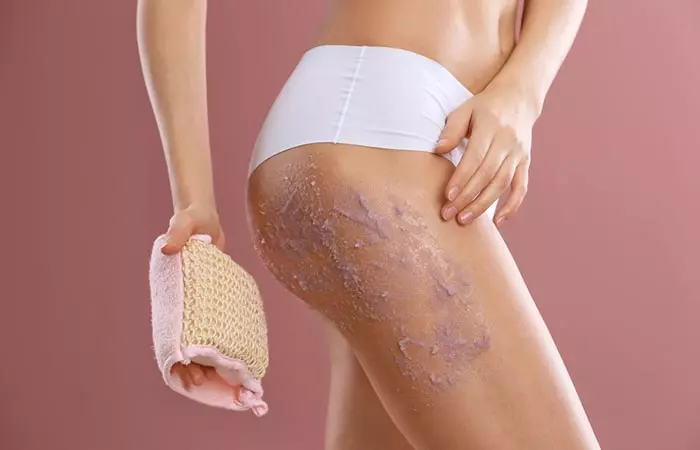
You may develop stretch mark scars around your knees, calves, and thighs during puberty (due to growth spurt) and pregnancy (due to weight gain) or sudden weight loss. At first, they appear as red and purple lines (fresh scars), which later turn white (old scars). Treating the scars while they are fresh can fade them. You may try the following methods:
- Exfoliate your skin regularly. You may use a physical scrub or homemade sugar scrub.
- Massaging the area with virgin coconut oil can speed up the wound healing process and collagen production, which may help fade scars (5).
- Massaging the area with products containing Centella asiaticai A healing herb, also known as gotu kola, used to treat various skin conditions, such as eczema, leprosy and psoriasis. and hyaluronic acid may show promising results and fade stretch marks (6).
- Massaging the area with tea tree oil may help. The oil contains antimicrobial, anti-inflammatory, and antiseptic properties that may benefit your skin (7), (8), (9). These properties also inhibit microbial growth and promote faster healing of fresh cuts and wounds. Accelerated healing may help minimize the risk of scarring.
However, ensure you are not allergic to any of these oils and do a patch test before applying them. Stop use and consult a doctor if you experience any allergies.
Treating Old And Dark Scars On Legs
Older scars may undergo hyperpigmentation and turn darker than the surrounding skin. While it is tough to get rid of older scars, you may try these methods:
- Applying onion extract gel can help soften scar tissues, improve their texture, reduce redness, and refine their appearance (10).
- Chemical exfoliators containing glycolic acid can improve the appearance of stubborn atrophic scarsi They occur when the skin heals below the normal layer of skin tissue after an injury but is not able to generate enough tissues. (11).
- Using a sugar scrub may also help improve the appearance of scarring. It works by removing any damaged tissue from wounds and even reduces odor (12).
- Silicone sheets and gels are known to improve even the most severe hypertrophic and keloid scars (13).
 Quick Tip
Quick TipHowever, if you are unable to fade the scars with the treatments mentioned above and if the scarring is severe, consult a doctor immediately.
When To Consult A Doctor For Scars On The Legs
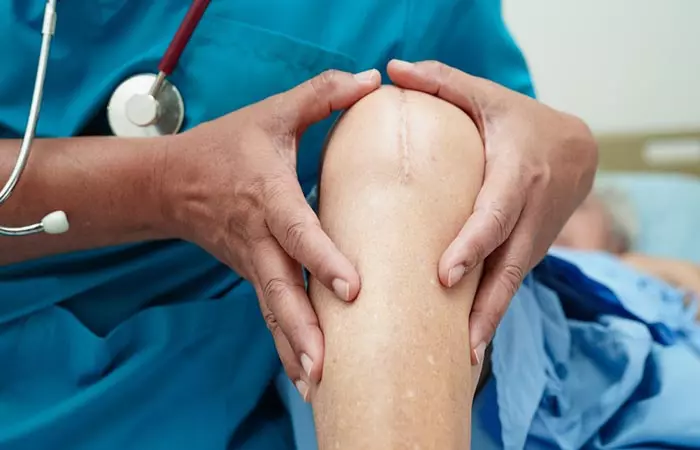
If the scarring on your legs is severe and affecting mobility, consult a licensed dermatologist to perform medical treatments to reduce scarring and related issues. Seeking professional advice in such cases is important, as it can affect both physical appearance and emotional well-being. Some of the techniques that they may employ include:
- Pressure dressing
- Laser therapy
- Steroid injections
- Cryosurgery
- Chemical peeling
- Dermabrasion and microdermabrasion
- Dermal filling
- Botox treatment
- Microneedling
- Scar removal surgery
- Subcision and excision
Effective wound management is crucial for scar healing. Here are a few more tips to help you manage scars on the legs.
Tips On How To Prevent Or Get Rid Of Scars On The Legs Fast
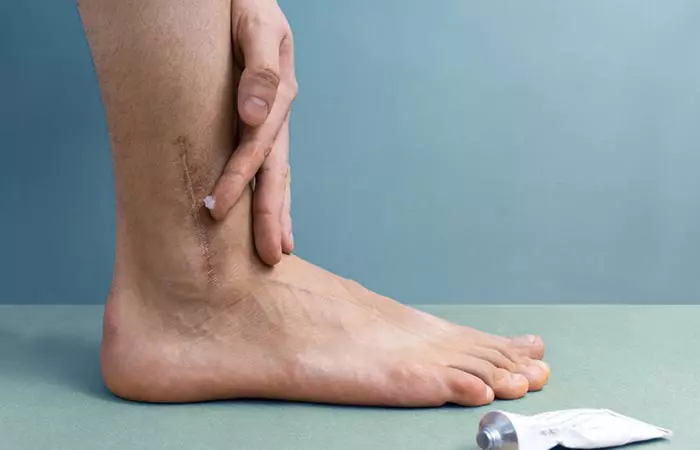
- In case of an injury, rinse your legs with cold or lukewarm water and allow the wound to air dry.
- Apply antibacterial cream to prevent infection.
- Keep the scars (or wound) covered and protect them from direct UV exposure. Apply sunscreen whenever you step out.
- Avoid picking at the scab that forms over a wound.
- Begin treating the scar as soon as it appears.
- During the skin healing process, apply moisturizer to soften scar tissues and maintain skin elasticity.
- You may try bleaching creams to address hyperpigmentation but strictly after active wound healing has completed.
- You may try bleaching creams to address hyperpigmentation.
- Use skin care products enriched with vitamin E, cocoa butter, aloe vera, and essential oils to fade scars.
- Massage your legs frequently to break down any fibrous tissues within the scar.
Infographic: Best Remedies For Scars On The Legs
Scars on the legs can be a source of self-consciousness and discomfort for many individuals. Fortunately, there are various natural and over-the-counter remedies available to help diminish their appearance. Whether it is through the power of natural ingredients or scientifically developed products, these remedies provide a range of options for promoting healing and restoring confidence. For further information, check out the infographic below!

Illustration: StyleCraze Design Team
Getting rid of leg scars can be tough, and no treatment can erase them easily. However, many cosmetic treatments are available that can treat and eventually fade old scars. You may consult a doctor to determine which treatment may help you. Moreover, you can reduce the chances of developing deep scars through proper wound care. Follow proper treatment and use ointments to manage the wound and facilitate proper skin healing. Also, keep your skin nourished and moisturized. You have to be persistent with the treatment methods to get the desired results.
Frequently Asked Questions
Can aloe vera remove scars on legs?
Using aloe vera may help reduce the scars and heal your skin. In addition, it may soothe the inflammation and help repair the skin.
How can I lighten the dark spots on my legs?
Mix 2 tablespoons of apple cider vinegar with 6 tablespoons of water. Use a cotton pad and apply the mixture to the dark spots to reduce their appearance. Repeat daily and moisturize the area afterward.
How long does it typically take to see results when using scar treatments on legs?
Topical treatments for scars can take up to weeks to show visible results with consistent use. Treatments like laser therapy and dermabrasion take multiple sessions. However, results depend on the type of scar, skin type, age of the individual, and other factors.
Is it possible to completely remove scars on the legs?
Depending on the type of scars, some may disappear completely, while others may require multiple treatments.
Are there any specific lifestyle factors, such as diet or exercise, that can help in scar reduction?
Lifestyle changes cannot directly affect the appearance of a scar. However, maintaining a healthy lifestyle and balanced diet may help promote healthier skin and faster scar healing post-treatment.
Can applying vitamin E oil or other natural oils help in minimizing leg scars?
Yes, using nourishing oils may help improve the appearance of certain types of scars over time and also hydrate the legs, making them softer.
Can camouflage makeup or self-tanners help in concealing leg scars?
Makeup and self-tanners can easily hide surface scars that are not pitted or formed into the skin.
Want to know how to remove old scars from your legs? Dive into this video to get some tips and tricks to get rid of those pesky scars quickly and easily.
Personal Experience: Source
StyleCraze's articles are interwoven with authentic personal narratives that provide depth and resonance to our content. Below are the sources of the personal accounts referenced in this article.
i. How to remove scars on legs fasthttps://www.youtube.com/watch?v=MLCQqnNrL4g
References
Articles on StyleCraze are backed by verified information from peer-reviewed and academic research papers, reputed organizations, research institutions, and medical associations to ensure accuracy and relevance. Read our editorial policy to learn more.
- Keloid and Hypertrophic Scars Are the Result of Chronic Inflammation in the Reticular Dermis
https://www.ncbi.nlm.nih.gov/pmc/articles/PMC5372622/ - The Efficacy of Silicone Gel for the Treatment of Hypertrophic Scars and Keloids
https://www.ncbi.nlm.nih.gov/pmc/articles/PMC2918339/ - A review of four common medicinal plants used to treat eczema
https://www.researchgate.net/publication/289675826_A_review_of_four_common_medicinal_plants_used_to_treat_eczema - Plants used to treat skin diseases
https://www.ncbi.nlm.nih.gov/pmc/articles/PMC3931201/ - Effect of topical application of virgin coconut oil on skin components and antioxidant status during dermal wound healing in young rats
https://pubmed.ncbi.nlm.nih.gov/20523108/ - Striae gravidarum: Risk factors prevention and management
https://www.sciencedirect.com/science/article/pii/S2352647516300272 - Appraisal on the wound healing potential of Melaleuca alternifolia and Rosmarinus officinalis L. essential oil-loaded chitosan topical preparations
https://www.ncbi.nlm.nih.gov/pmc/articles/PMC6746351/ - Melaleuca alternifolia (Tea Tree) Oil: a Review of Antimicrobial and Other Medicinal Properties
https://www.ncbi.nlm.nih.gov/pmc/articles/PMC1360273/ - The Influence of Tea Tree Oil (Melaleuca alternifolia) on Fluconazole Activity against Fluconazole-Resistant Candida albicans Strains
https://www.hindawi.com/journals/bmri/2015/590470/ - The ability of onion extract gel to improve the cosmetic appearance of postsurgical scars
https://onlinelibrary.wiley.com/doi/full/10.1111/j.1473-2165.2008.00371.x - Biweekly serial glycolic acid peels vs. long-term daily use of topical low-strength glycolic acid in the treatment of atrophic acne scars
https://onlinelibrary.wiley.com/doi/full/10.1046/j.1365-4362.2000.00076.x - Sugar for wounds
https://pubmed.ncbi.nlm.nih.gov/11299571/ - International Clinical Recommendations On Scar Management
https://pubmed.ncbi.nlm.nih.gov/12142678/
Read full bio of Dr. Sonam Jeswani Ramrakhiani
Read full bio of Ramona Sinha
Read full bio of Anjali Sayee
Read full bio of Shiboli Chakraborti






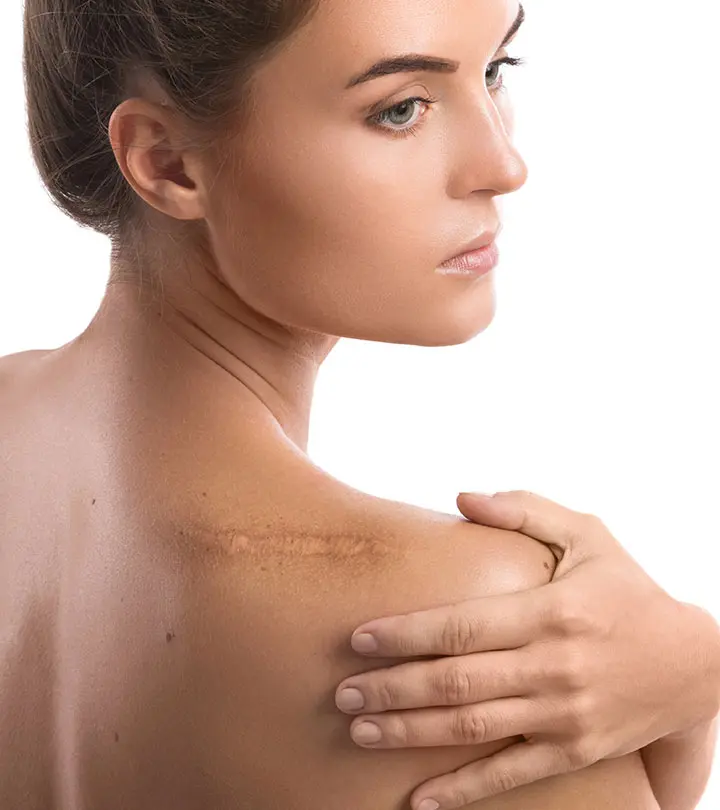
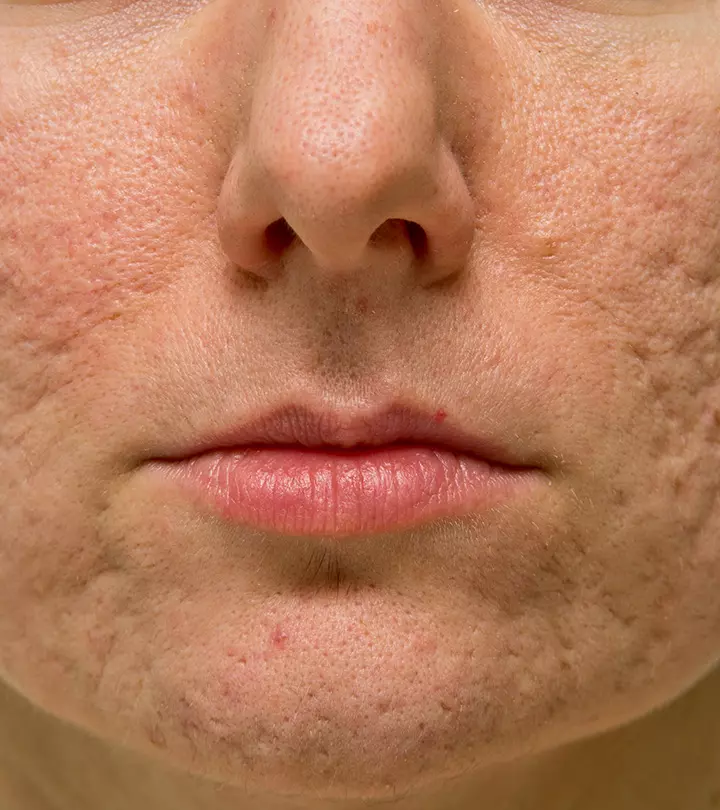


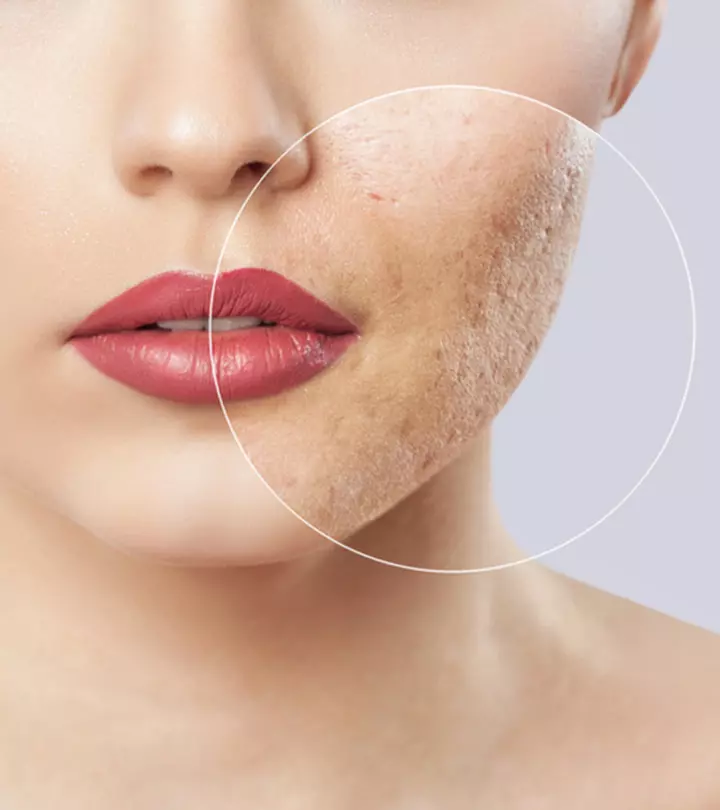


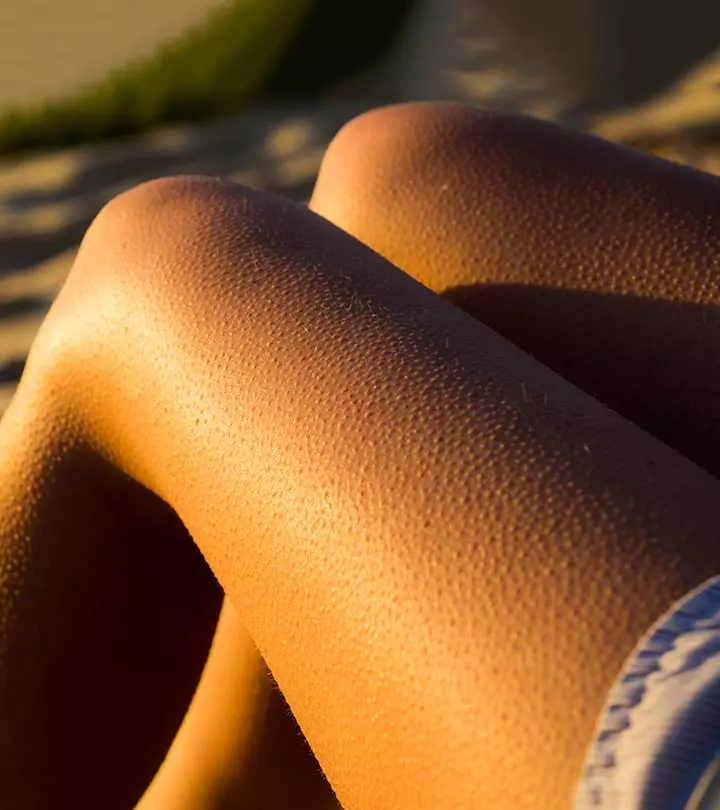
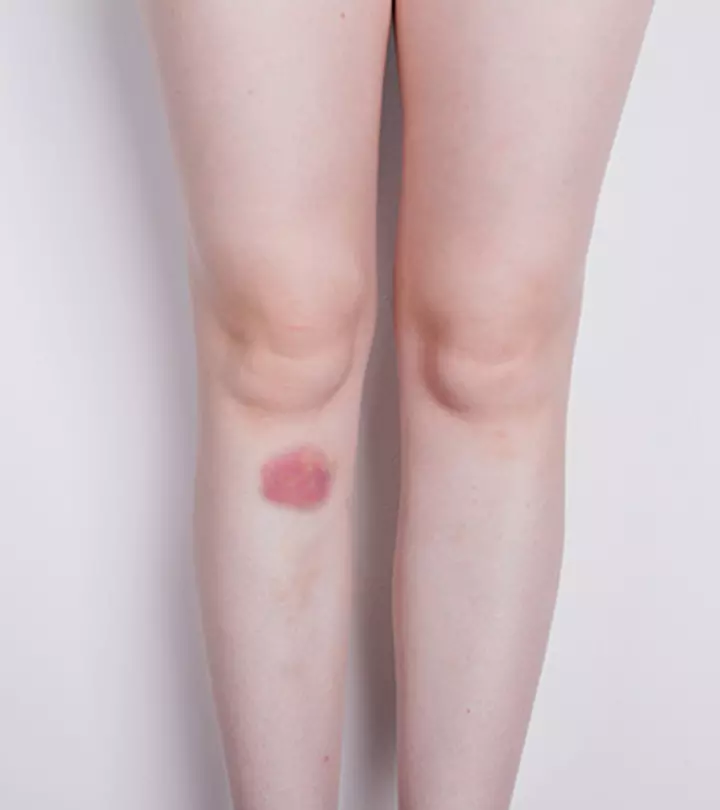
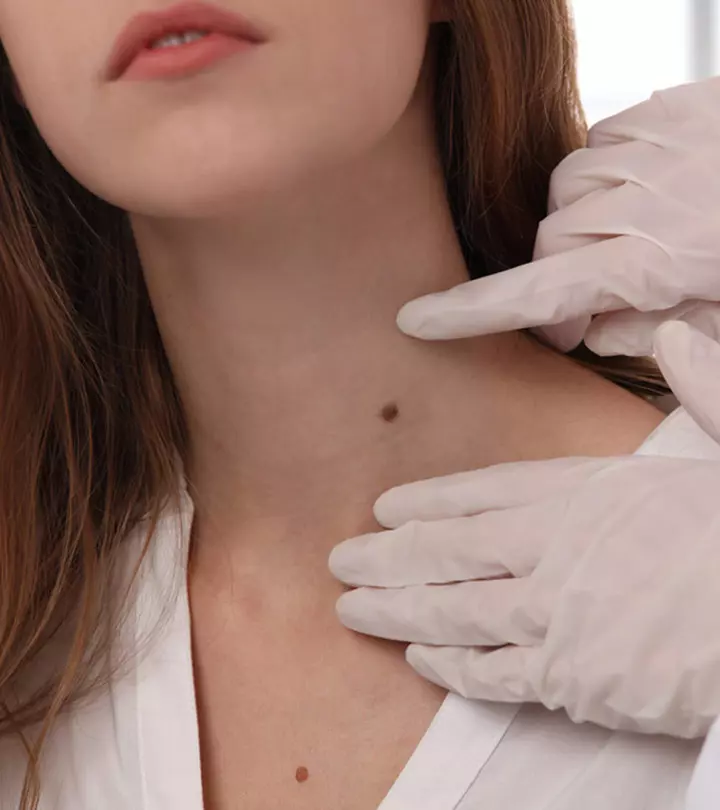

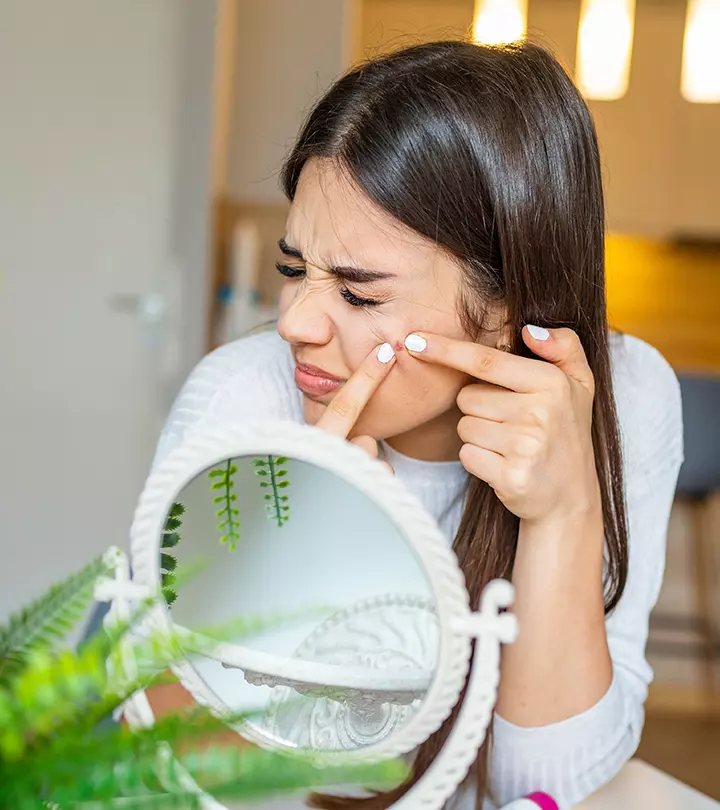
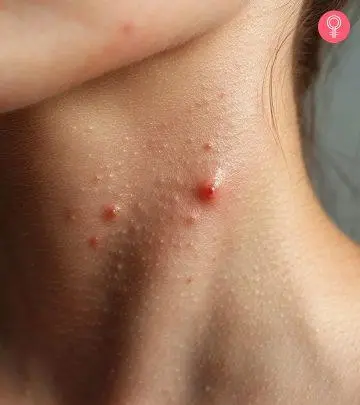

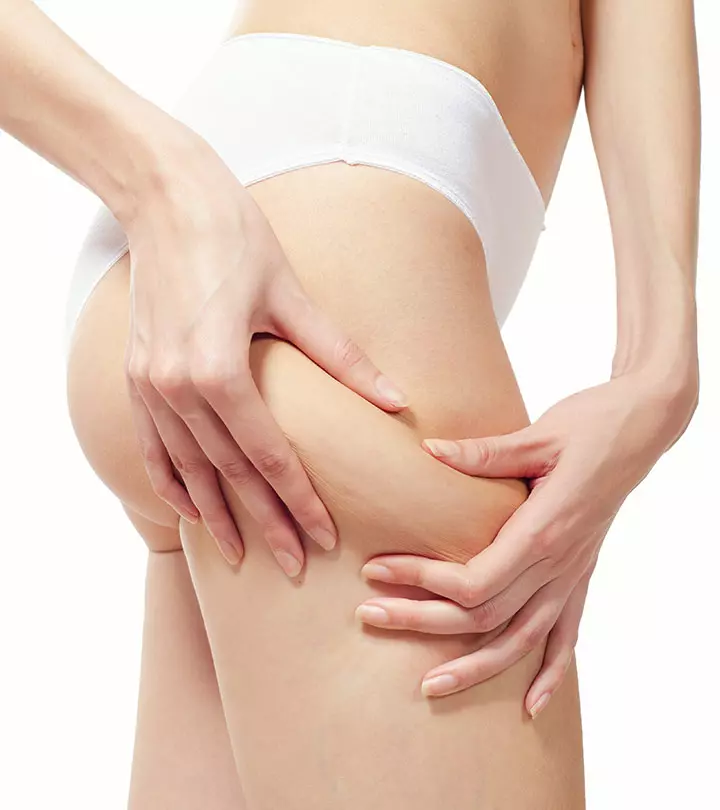

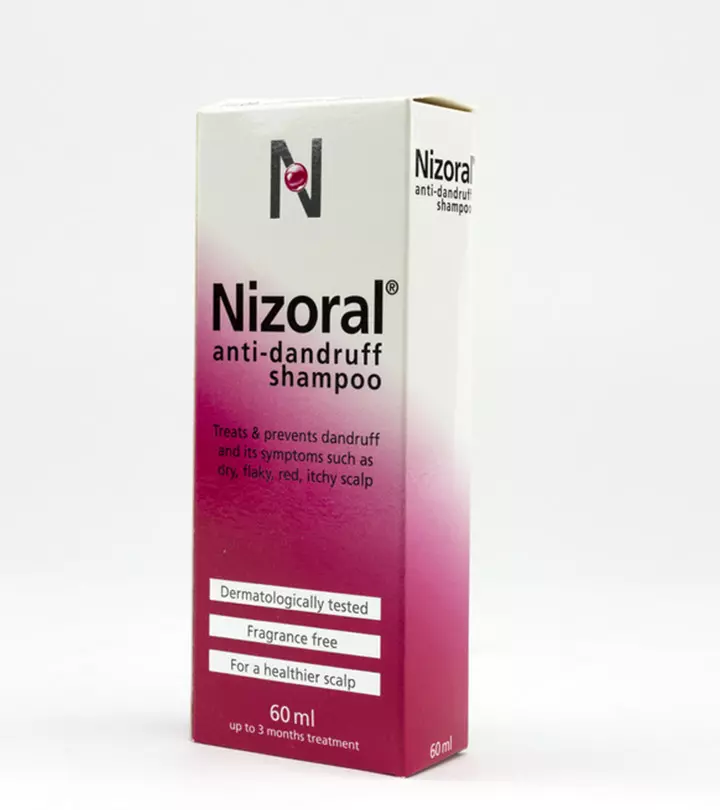
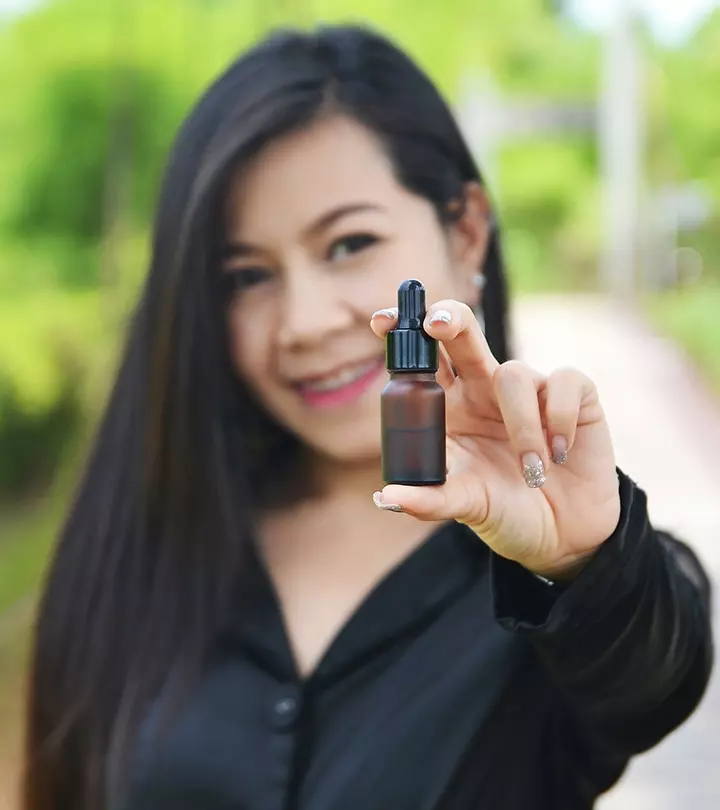

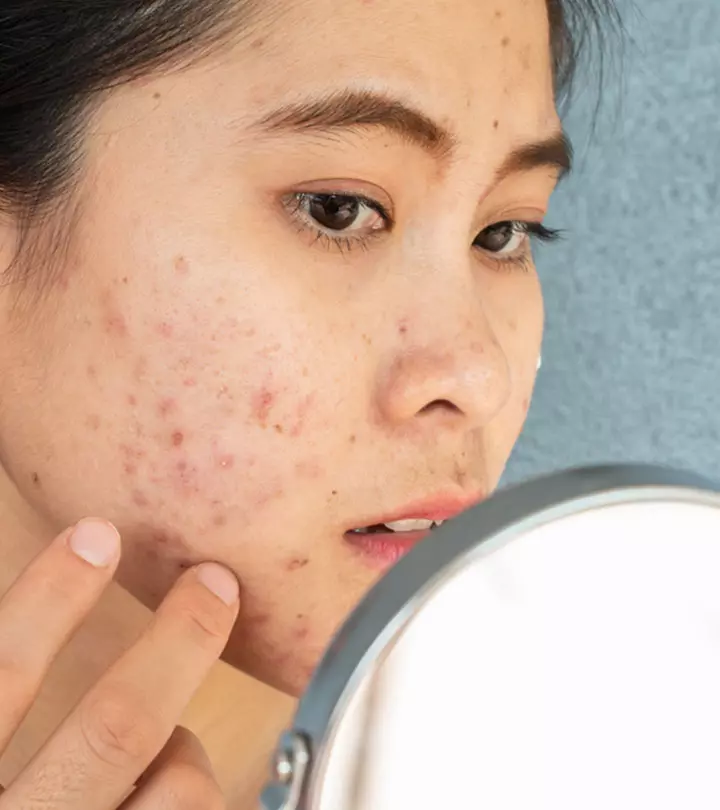
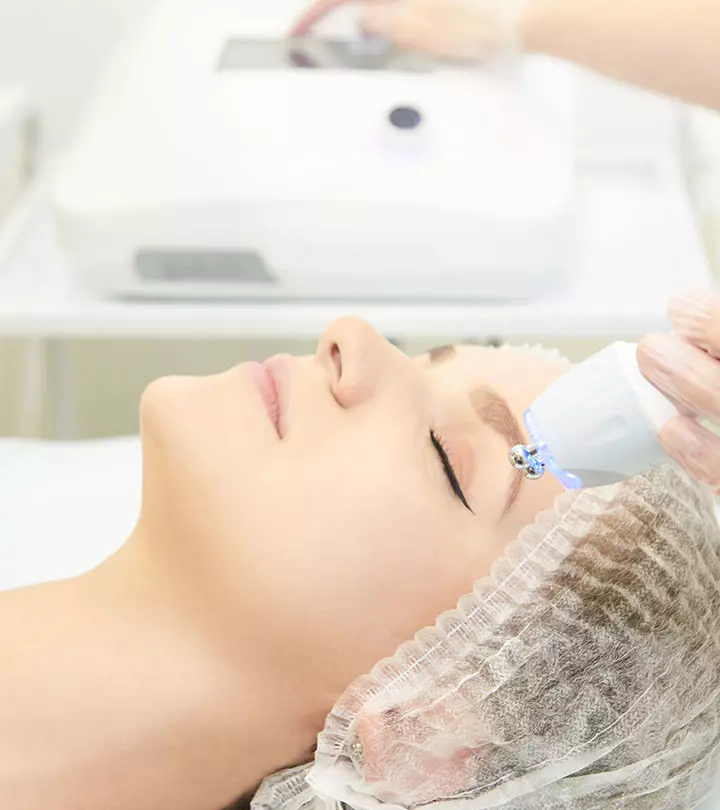
Community Experiences
Join the conversation and become a part of our empowering community! Share your stories, experiences, and insights to connect with other beauty, lifestyle, and health enthusiasts.